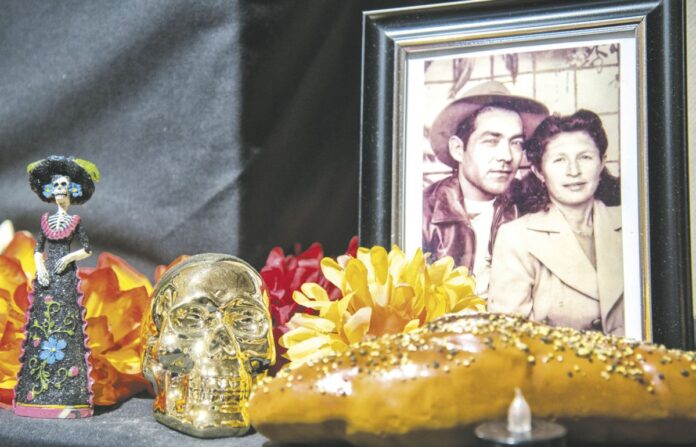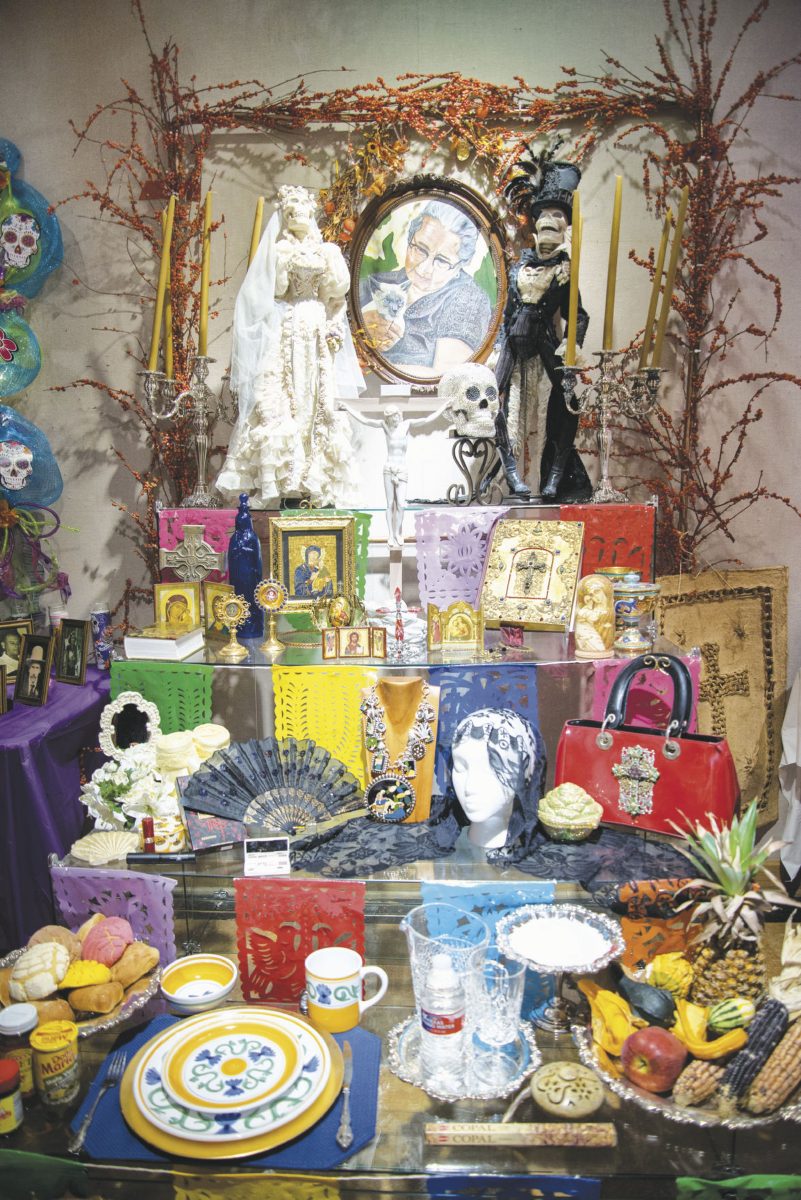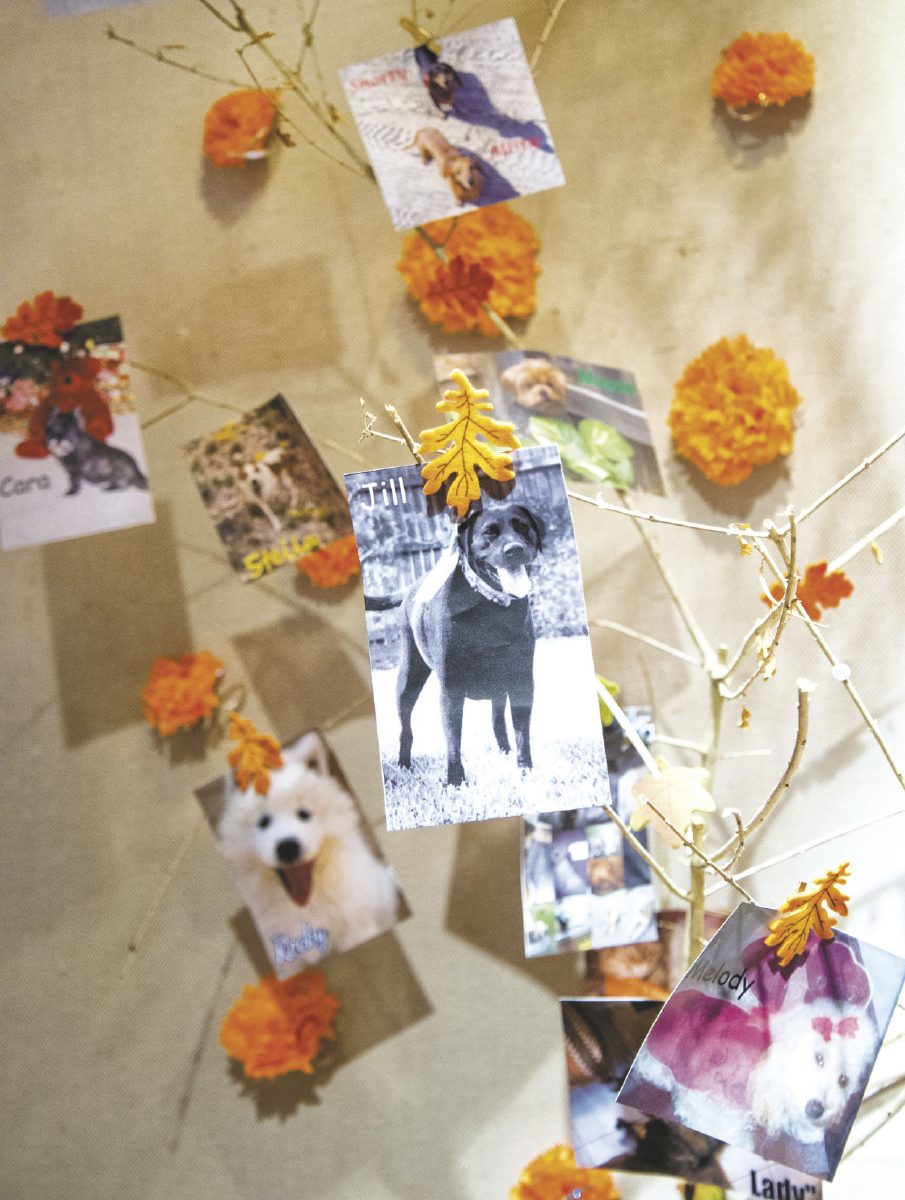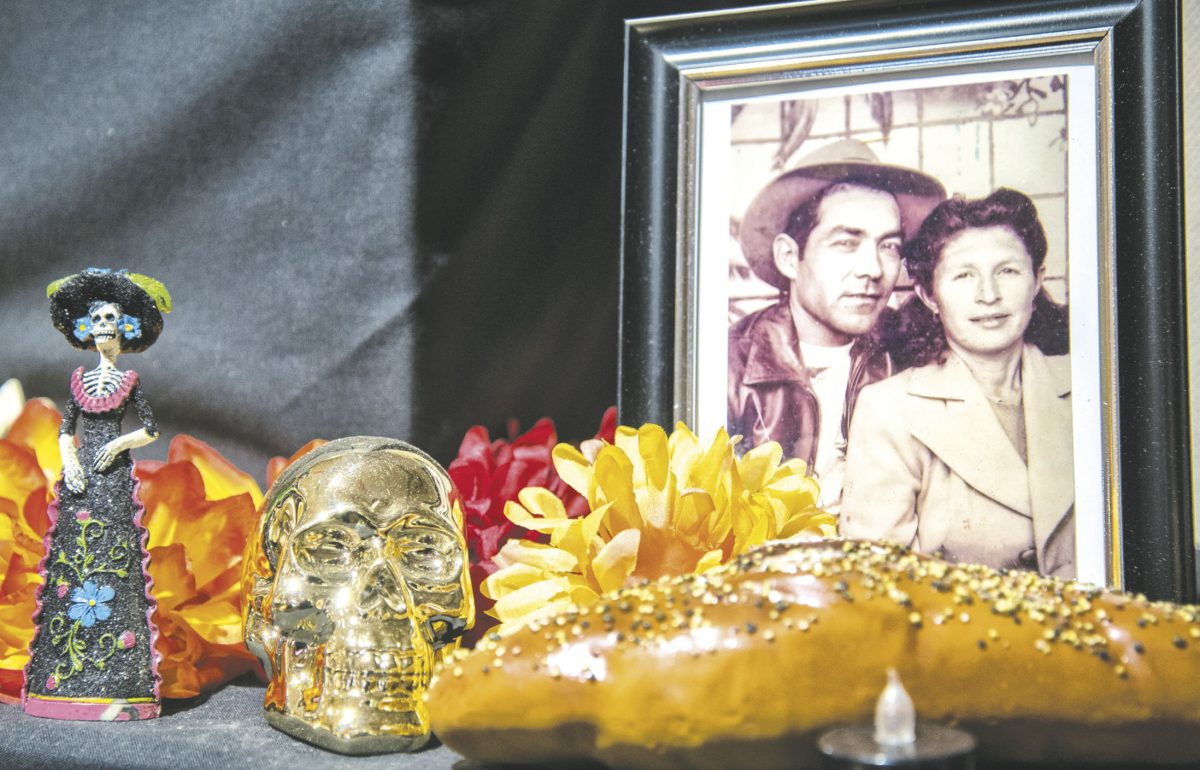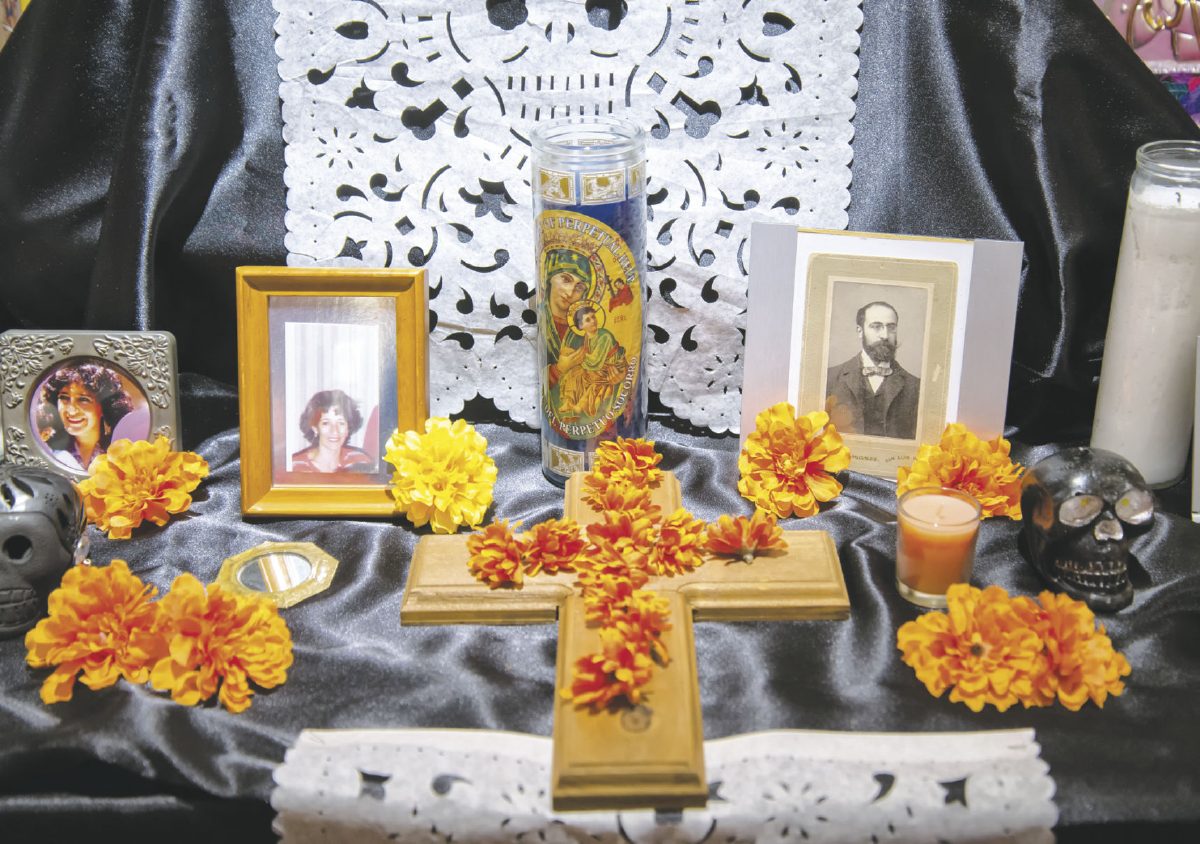HARLINGEN — We remember.
We remember Margarita Taguilas, Ruben and Ofelia, and a young girl cradling her dog.
We remember Cesar Chavez, Carrie Fisher, Jimi Hendrix, Georgia O’Keeffe and a forgotten slave cemetery in Virginia.
And most of all, we remember an ancient Mexican tradition — Dia de los Muertos — still alive in the 21st century in all of its manifestations both north and south of the border.
Local residents have arranged altars at the Harlingen Arts and Heritage Museum to remember the people, pets and all things dear to them, including tributes to those mentioned above.
The public is invited to view them beginning Nov. 2.
“Different groups have included different themes and different topics,” said Mary Torres, president of the Rio Grande Valley Museum Association.
“We wanted to offer everyone in the community the opportunity to create an altar,” she said.
Although she had seen the altars several times, she stopped by yesterday to admire them again. Palm leaves rose in an arc over photos of couples at different ages — perhaps the same couple. A beautiful young bride and handsome groom posed for one photo and an aging couple embraced on a park bench.
An altar draped with white cloth had a bottle of Coca-Cola and a bottle of tequila, plus a green pack of Salem cigarettes. Glistening ceramic masks sat on a colorful serape at another altar. Colorful papel picado hung everywhere. A quilt with patches depicting skeletons in different guises hung against one wall.
Zempasuchitl flowers made of paper surrounded a poster of Cesar Chavez. The creator of that altar remembered the civil rights leader with such messages as “Boycott Non-UFW Grapes.” Another sign read “Huelga Don’t Buy Grapes.” Obviously someone wanted others to remember Chavez’s work to stop the pesticides being sprayed on grapes being picked by migrant workers, chemicals dangerous to their health.
Another altar had a very different message. It was erected by Pooches Corner, a dog grooming pet care facility.
“This is one of the more original,” Torres said, looking over the altar covered with photos of dogs. Their names, “Jill, Bibi, Stella” personalized their message. Torres appreciated that message because her own dog passed away last year.
She looked forward to the opening event Thursday, which will be open to the public free of charge.
“We’re going to have refreshments,” Torres said. “We’re going to have matachines dancers.”
Grupo Americanto, flute player from Peru, will also entertain guests.
She stopped to observe still another altar which included a bottle of mole, a traditional sauce.
“It’s beautiful, very touching,” she said. “A lot of thought went into creating it.”
In the center of it all stood a very thought-provoking piece, sort of a centerpiece which pulled it all together.
“We remember — Recordamos” written in black beans along the top and bottom of a patch of popcorn kernels. Colored rice forms the curving outline of a butterfly. White candles made of white rice seem to light up the entire scene.
WHAT: Dia de los Muertos reception
WHERE: Harlingen Arts and Heritage Museum, 2425 Boxwood St.
WHEN: Nov. 2, 6 – 8 p.m.
ADMISSION: Free to the public
By TRAVIS M. WHITEHEAD
Staff Writer
HARLINGEN — Dia de los Muertos — Day of the Dead — is an important time of year throughout Mexico. It’s observed in different ways throughout Mexico to honor the dead.
In the Mexican state of Michoacan, those wishing to reunite with deceased loved ones gather in cemeteries around Lake
Patzcuaro.
The gatherings at cemeteries take place on Noche Muerte, which begins the night of Nov. 1 and continues into the early hours of the next morning.
Visitors to the cemeteries will find very different experiences. Isla Janitzio on Lake Patzcuaro has become extremely commercial. Tourists climb a steep hill to a popular cemetery. The bereaved sit next to graves and say “propina” asking for a tip in return for photographs, possibly one of the few chances they have to make some extra money.
The village of Ihuatzio is entirely different. Locals reuniting with loved ones erect elaborate wooden frames over graves. They cover them with orange zempashutl flowers to invite the spirits of their loved ones to spend the night with them.
Candles signal the spirits where to arrive because they can get lost in the darkness. Food hangs from some of the frameworks, and more is placed on plates and in bowls.
Observance of such an ancient tradition is fitting when you consider the pre-Columbian structures nearby, well built and still in good condition. The same is true for Tzintzuntzan, the site of the pre-Columbian “Las Yacatas,” as well as Spanish colonial ruins. Tourists pack the cemetery and locals play a traditional game in which they kick a flaming ball back and forth to the delight of onlookers.

